The ’80s were the golden age of school-themed sitcoms, where detention seemed like a party and even the strictest teachers secretly had hearts of gold. While we were struggling with real homework and awkward cafeteria politics, television presented idealized versions of academic life where problems were solved in 30 minutes and nobody ever really failed a test. These shows convinced an entire generation that high school and college would be non-stop adventures filled with witty banter, valuable life lessons, and inexplicably cool teachers.
1. Head of the Class (1986-1991)
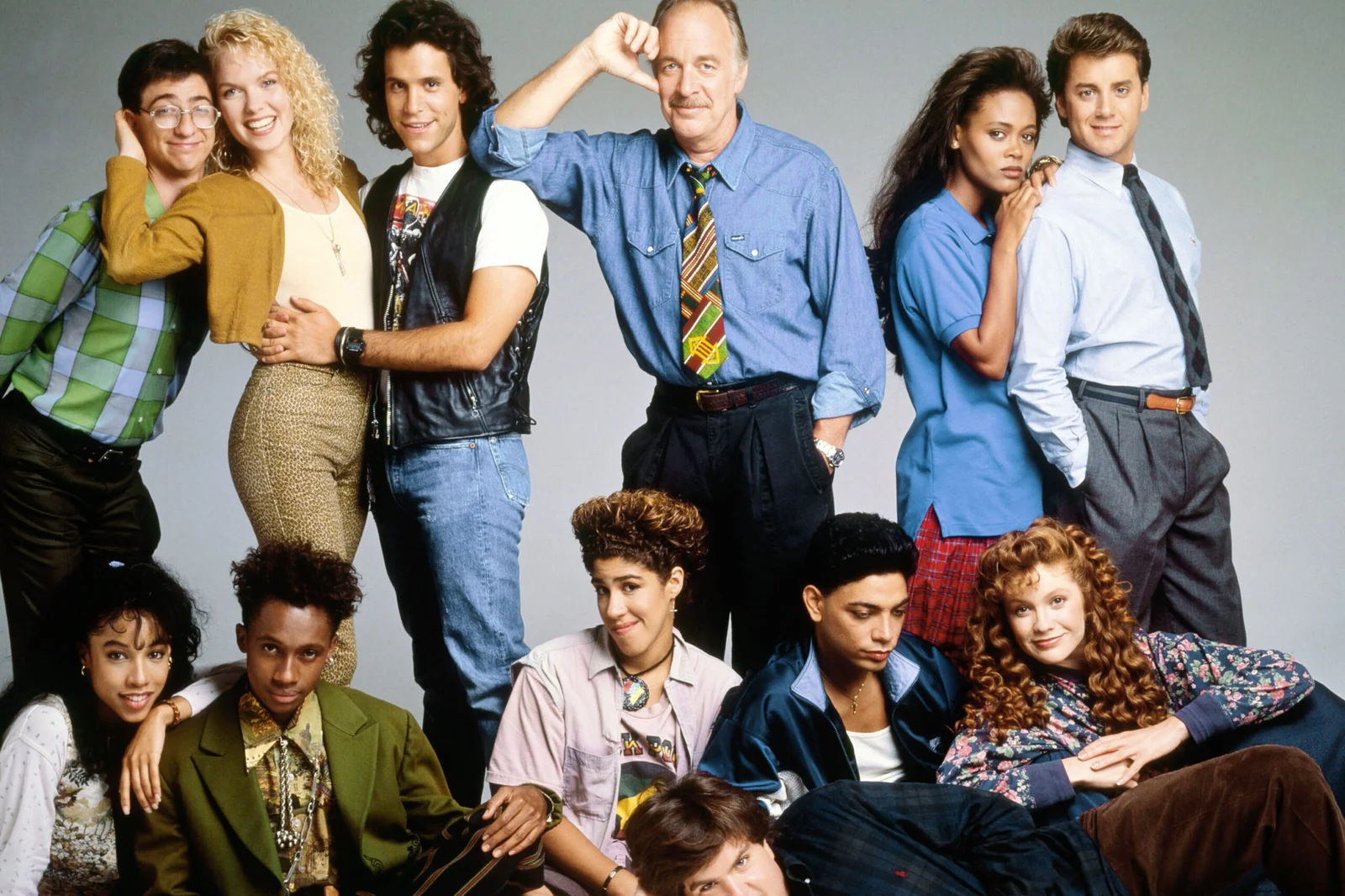
Howard Hesseman brought counterculture credibility to his role as the unorthodox history teacher Charlie Moore, guiding a room full of academically gifted but socially awkward students at Manhattan’s Monroe High. The Individualized Honors Program (IHP) classroom became a place where brilliant misfits could thrive under Moore’s unconventional teaching methods, making intelligence seem remarkably cool in an era obsessed with material success. The show broke ground by featuring a genuinely diverse cast of brainy students, including future stars Robin Givens and Brian Robbins. IMDb features ratings that show viewers to this day still remembers this relatable series.
While our real gifted programs usually meant extra homework rather than philosophical discussions, “Head of the Class” convinced viewers that being smart could be the ultimate social asset. The rotating cast of teachers (including Billy Connolly after Hesseman’s departure) showed that educators could be charismatic mentors rather than just assignment-givers and test-graders. The series even took its students on an unprecedented trip to the Soviet Union during the Cold War, making school seem like a passport to global adventure rather than a fluorescent-lit building where we counted down the minutes until the final bell.
2. Welcome Back, Kotter (1975-1979)
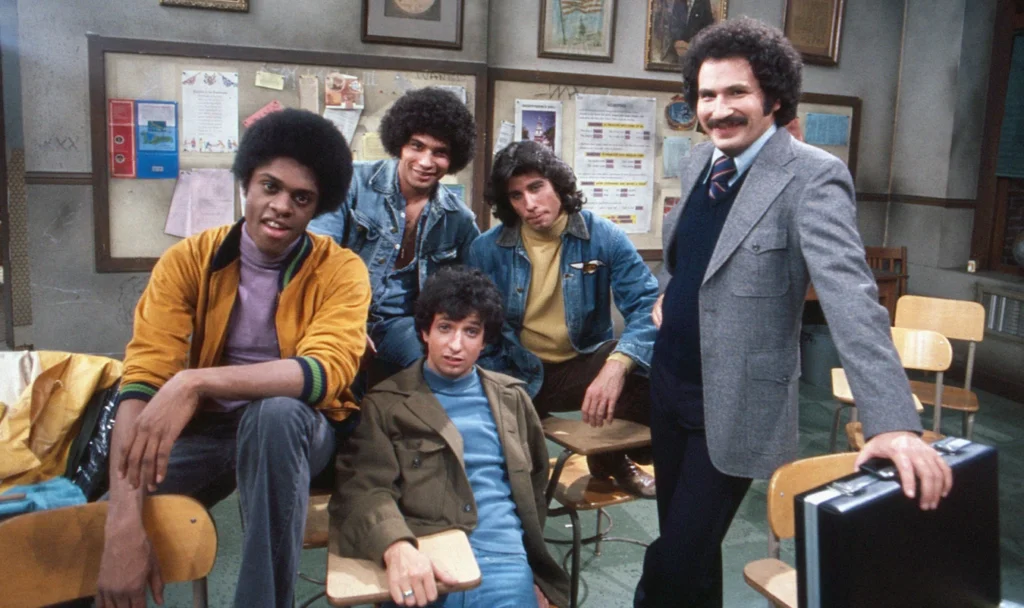
Though it debuted in the late ’70s, “Welcome Back, Kotter” defined school sitcoms well into the ’80s with its perfect blend of classroom humor and genuine heart. Gabe Kotter’s return to his alma mater to teach a group of underachieving students dubbed the “Sweathogs” created a formula that school shows would follow for decades. John Travolta’s breakout role as Vinnie Barbarino launched him to superstardom, while the catchphrases (“Up your nose with a rubber hose!”) echoed through real-life school hallways across America. CNN recounts a time and place when this series was actually met with pushback for its content.
The James Buchanan High School of Brooklyn represented a more urban, gritty educational environment than most later shows would dare portray, with students from working-class backgrounds who weren’t afraid to challenge authority. Kotter’s ability to connect with his students because he had once been one of them offered a hopeful message about the power of education to break cycles of underachievement. The show’s theme song, with its wistful lyrics about returning to a place that “you once knew,” captured the bittersweet nostalgia we all eventually feel about our school days, even the difficult ones.
3. Saved by the Bell (1989-1993)
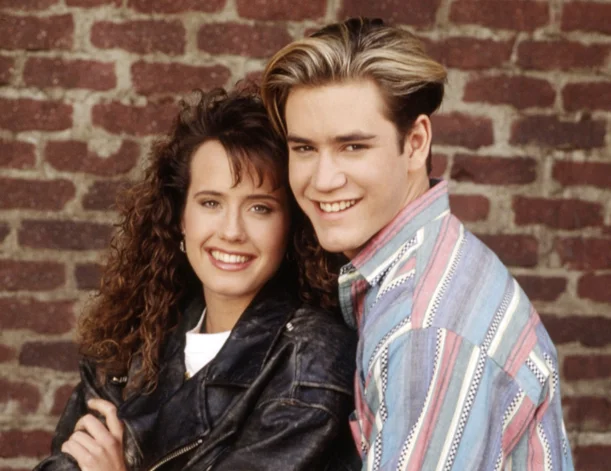
No show idealized high school quite like “Saved by the Bell,” which transformed Bayside High into a technicolor playground where classes were mere backdrops for Zack Morris’s elaborate schemes. The show’s transition from its origins as “Good Morning, Miss Bliss” created the ultimate teen fantasy world where principals were foils rather than disciplinarians, and schoolwork rarely interfered with the gang’s social lives. Mark-Paul Gosselaar’s fourth-wall-breaking asides and magical “time-outs” added a surreal quality that somehow made the escapist portrayal of high school even more appealing. Time Magazine celebrates the sitcom for having a legacy that endures to this day.
Principal Belding’s exasperated “Hey, hey, hey, what is going on here?” became the rallying cry of authority figures everywhere, while the show’s exploration of issues like drug use (“I’m so excited!”) and homelessness occasionally brought real-world problems into the sunny California campus. The Max diner served as the perfect hangout spot that real schools never provided, complete with a magician/owner who seemed to exist solely to provide life advice and hamburgers to teenagers. Though it stretched into the ’90s, “Saved by the Bell” embodied the optimistic, consequence-free vision of education that defined ’80s school sitcoms.
4. The Facts of Life (1979-1988)
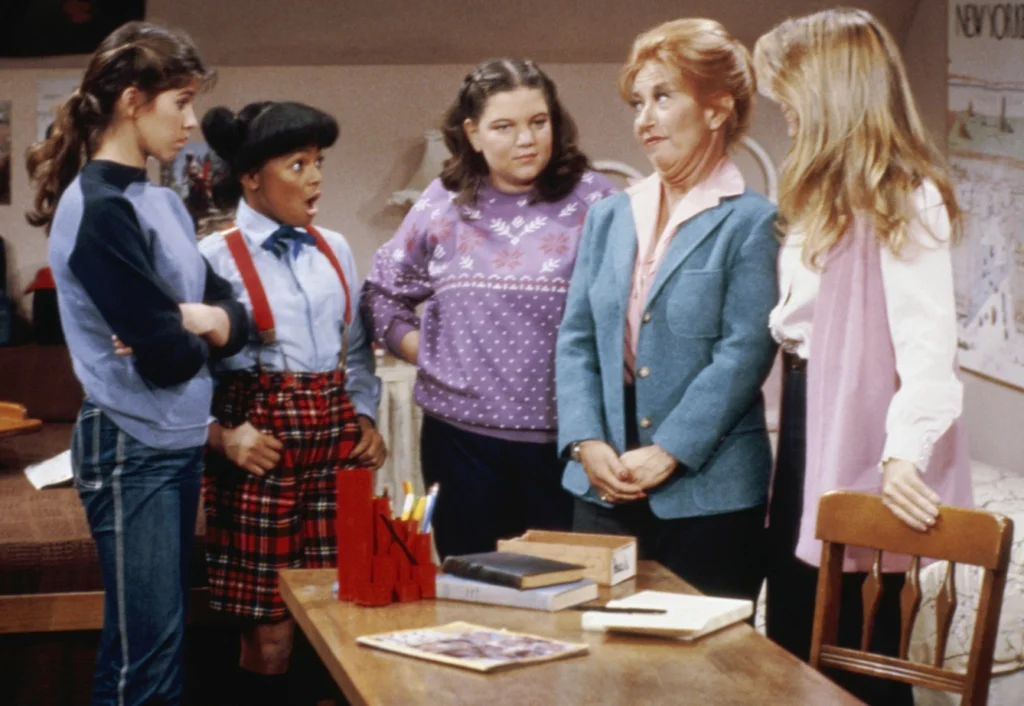
This “Diff’rent Strokes” spin-off centered on Edna Garrett’s transition from housekeeper to house mother at the exclusive Eastland School for Girls, creating a hybrid of school and family sitcom that ran for nine seasons. The show’s early focus on a large group of girls eventually narrowed to the core four—Blair, Tootie, Natalie, and Jo—whose contrasting personalities created perfect sitcom chemistry. Mrs. Garrett’s maternal guidance offered a vision of boarding school as a place of emotional growth rather than academic pressure, making education seem like one long slumber party with occasional life lessons.
The show’s evolution from school-based comedy to workplace sitcom (after the girls graduated and opened “Edna’s Edibles,” later “Over Our Heads”) mirrored the audience’s own journey from adolescence to early adulthood. The Facts of Life tackled surprisingly mature topics for its time, including eating disorders, teen pregnancy, and sexual assault, while maintaining its fundamentally wholesome nature. Countless young viewers dreamed of attending a boarding school like Eastland, never realizing that real boarding schools involved considerably more academics and considerably fewer heart-to-heart talks with a wise, redheaded house mother.
5. Fame (1982-1987)

Based on the hit movie, the television version of “Fame” brought the New York City High School for the Performing Arts to the small screen, combining sitcom elements with dramatic storylines and memorable musical numbers. The show’s iconic theme promised that students would “live forever” and “learn how to fly,” presenting artistic education as the ultimate path to immortality rather than just a way to satisfy graduation requirements. The diverse ensemble cast featured teacher characters like the demanding dance instructor Lydia Grant (Debbie Allen) and music teacher Elizabeth Sherwood (Carol Mayo Jenkins) who pushed students to artistic excellence.
While most real arts programs suffered from budget cuts throughout the ’80s, “Fame” portrayed a world where creative education received the attention and resources it deserved. The series showed the sweat behind the glamour of performing arts, with students practicing until exhaustion and facing tough criticism from instructors who were determined to prepare them for the competitive entertainment industry. For viewers in schools where arts programs consisted of a recorder unit in music class and an annual play in the cafeteria, “Fame” depicted an educational utopia where creativity wasn’t just allowed but was the entire point.
6. Square Pegs (1982-1983)
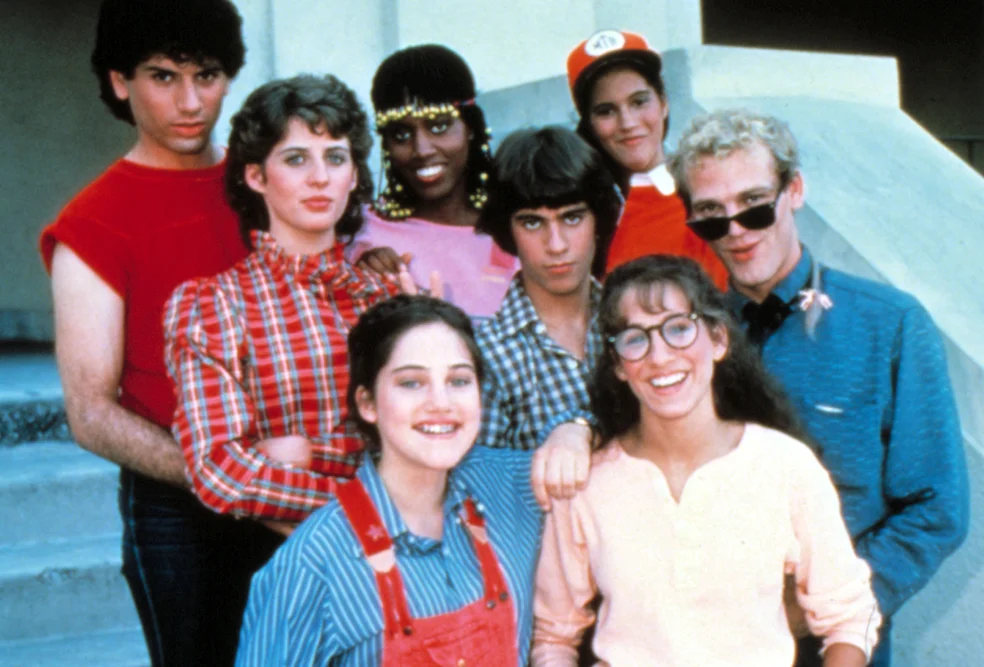
Though it lasted just one season, this cult classic starring Sarah Jessica Parker and Amy Linker as freshmen trying to break into the popular crowd at Weemawee High School perfectly captured teenage social anxiety. Created by former “Saturday Night Live” writer Anne Beatts, the show brought a more authentic, quirky sensibility to the school sitcom format, even featuring real new wave bands like Devo and the Waitresses (who performed the catchy theme song). The series treated high school as the complex social ecosystem it truly is, while still finding humor in the universal desire to fit in.
Parker’s Patty Greene and Linker’s Lauren Hutchinson represented the everygirl perspective that made “Square Pegs” relatable in a way that glamorized teen shows weren’t, with their efforts to infiltrate the “Valley Girl” clique led by Tracy Nelson’s Jennifer consistently falling flat. The show featured early career appearances by Jamie Gertz and Jami Gertz, plus character actor Bill Murray in a memorable guest spot as a substitute teacher. Its premature cancellation deprived viewers of what might have been the most honest depiction of high school life in ’80s television, though its influence can be seen in later teen-focused shows.
7. Growing Pains (1985-1992)
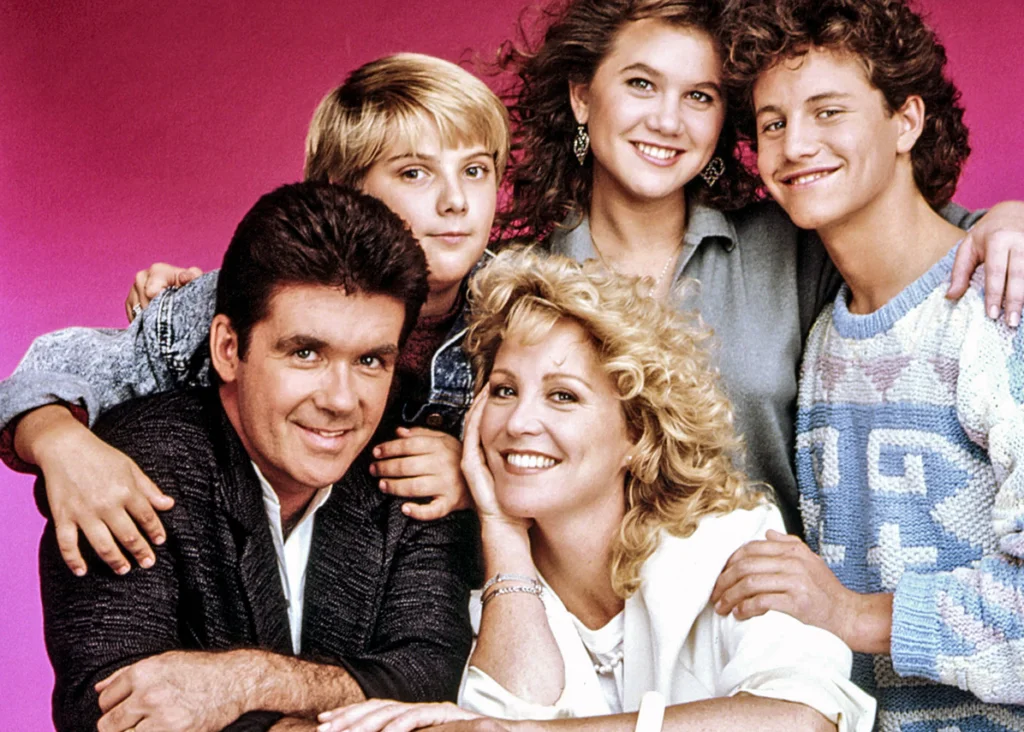
While primarily a family sitcom, “Growing Pains” devoted significant attention to the high school (and eventually college) experiences of the Seaver children, particularly Kirk Cameron’s Mike. The show portrayed school as an extension of home life, where academic challenges and social dilemmas provided opportunities for family bonding and parental wisdom. Dr. Jason Seaver’s work-from-home psychiatrist practice represented a then-unusual family structure that allowed for immediate resolution of school-related problems.
Mike’s transition from underachieving high school student to dedicated college student and teacher showed an educational journey rarely depicted in sitcoms, which typically kept characters perpetually in the same grade. The later addition of a young Leonardo DiCaprio as homeless student Luke added unexpected depth to the school storylines, addressing issues of educational access and privilege. For many viewers, the Seaver home represented the ideal intersection of school and family life, where report cards might cause temporary drama but never lasting consequences.
8. A Different World (1987-1993)
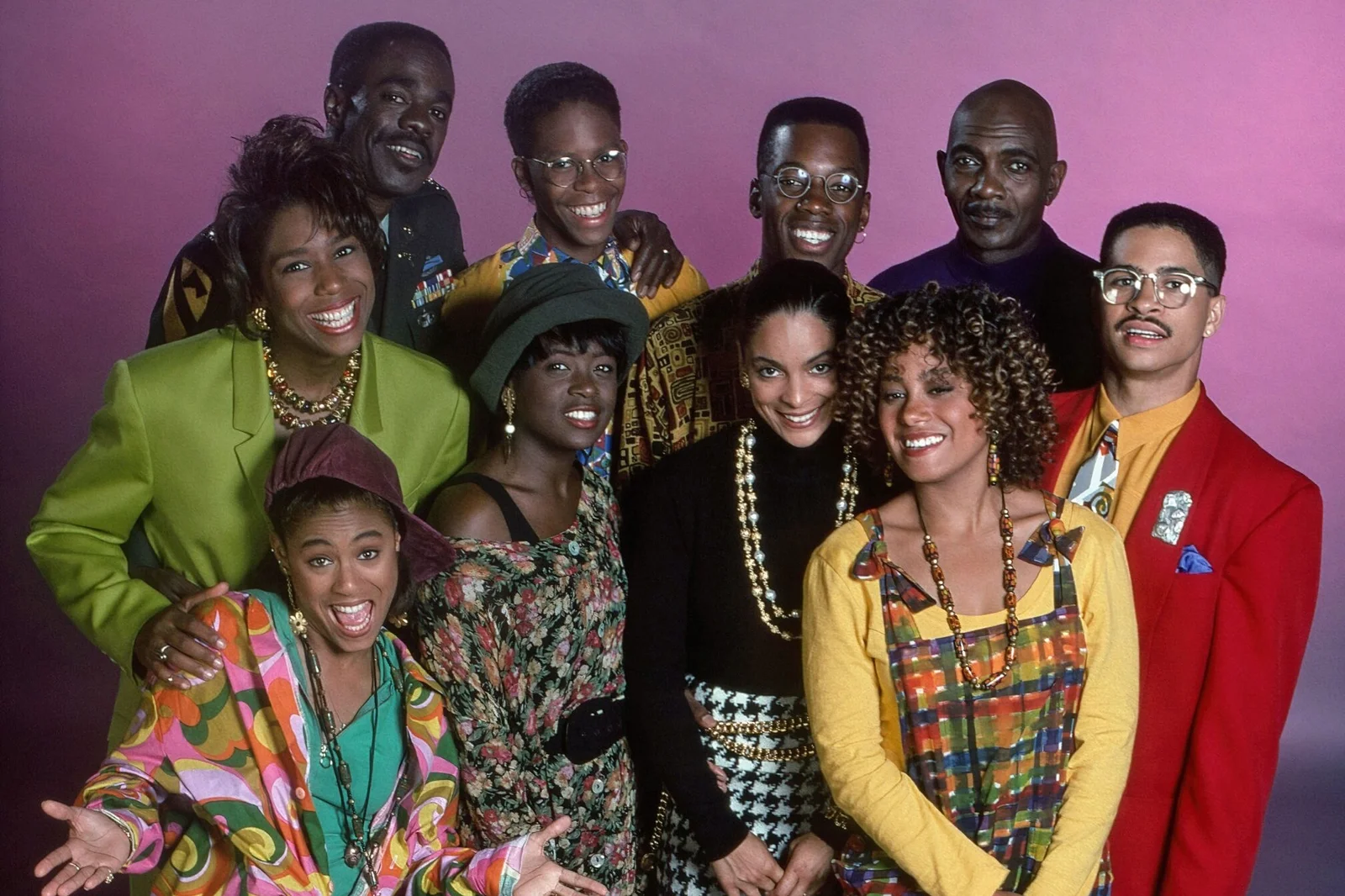
This “Cosby Show” spin-off began as a vehicle for Lisa Bonet’s Denise Huxtable at the fictional Hillman College before evolving into a groundbreaking ensemble comedy about Black student life. After Debbie Allen took over as producer in the second season, “A Different World” shifted focus to address serious issues including racism, AIDS, and sexual assault, making it far more than just another school sitcom. The show’s authentic portrayal of an HBCU (Historically Black College/University) environment introduced many viewers to a rich educational tradition they might otherwise never have encountered.
The core relationship between southern belle Whitley Gilbert (Jasmine Guy) and math whiz Dwayne Wayne (Kadeem Hardison) became one of television’s most beloved couples, showing character growth rarely seen in sitcoms. The dorm rooms, cafeteria, and campus hangout “The Pit” created a complete university world that made viewers feel like honorary Hillman students. College applications to HBCUs increased dramatically during the show’s run, demonstrating television’s power to influence educational aspirations and showing that a sitcom set at school could have real-world impact.
9. Charles in Charge (1984-1990)
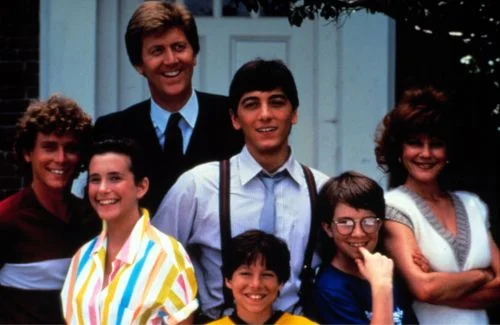
This sitcom reversed the typical formula by putting the student in charge, with Scott Baio’s college student Charles becoming the live-in caretaker for a household of children (the Pembrokes in season one, the Powells thereafter). Charles’ academic life at fictional Copeland College frequently intersected with his childcare responsibilities, creating a unique school-meets-domestic comedy hybrid. His best friend Buddy Lembeck (Willie Aames) represented the stereotypical college slacker, contrasting with Charles’ more responsible approach to both education and life.
The show’s theme song promised that “Charles in Charge of our days and our nights” would make “everything right,” offering a fantasy of the perfect big-brother figure who could navigate both college challenges and family dramas with ease. For young viewers, Charles represented the cool college student they aspired to become; for parents, he was the responsible caretaker they wished they could hire. The series presented college as a background rather than a focus, showing higher education as simply one component of adult life rather than a transformative experience.
10. Parker Lewis Can’t Lose (1990-1993)
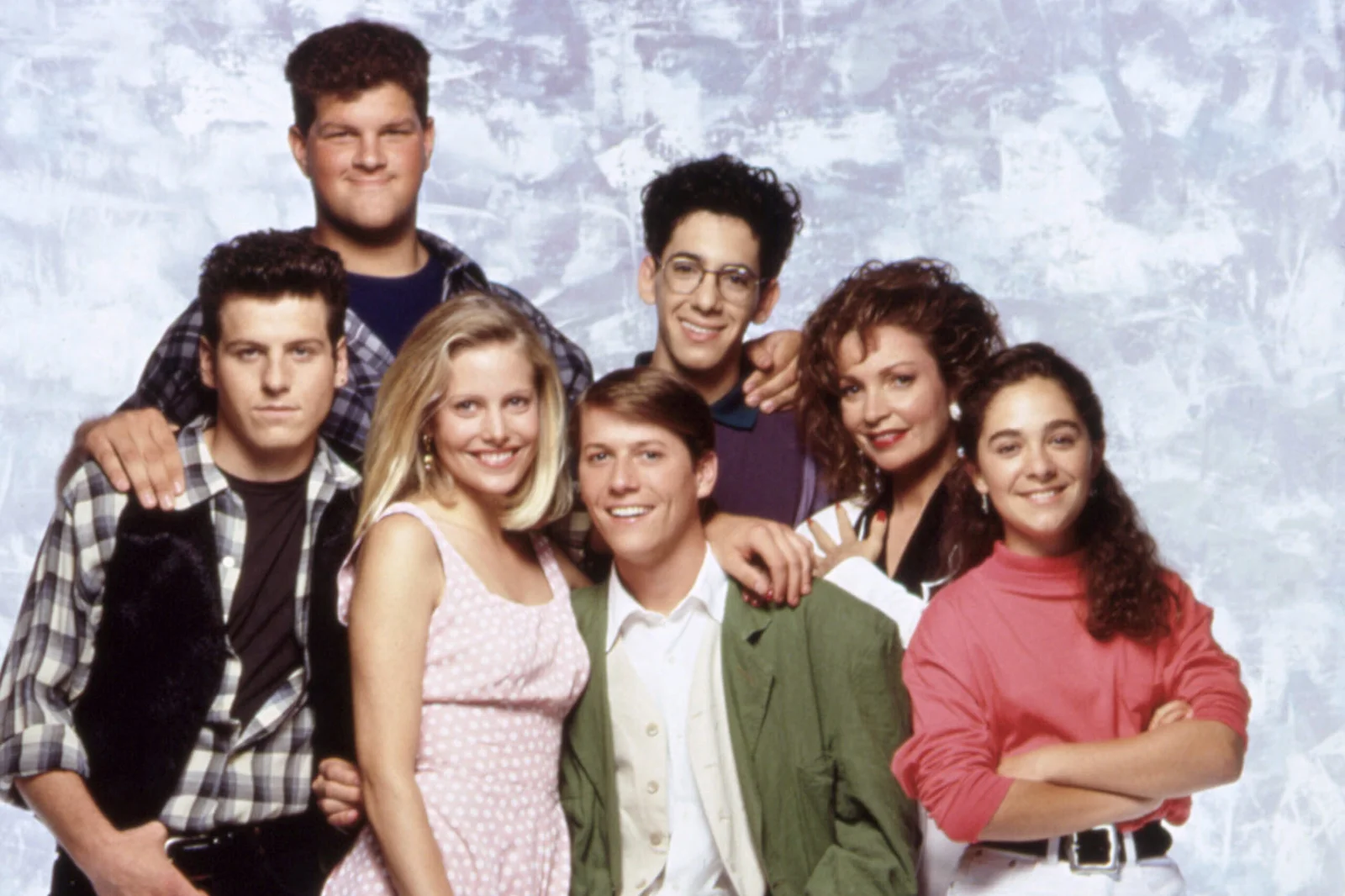
Though it began in 1990, this show’s DNA was pure ’80s, combining the fourth-wall-breaking quality of “Ferris Bueller” with surreal humor and visual style. Corin Nemec’s Parker navigated the fictional Santo Domingo High School with a mixture of schemes and genuine heart, constantly outwitting principal Grace Musso (Melanie Chartoff) and her assistant Jerry Steiner. The show’s catchphrase “Not a problem” reflected Parker’s optimistic approach to school challenges, while its innovative camera techniques and sound effects created a heightened version of high school that acknowledged its own artifice.
The series featured an unusual amount of student-teacher warfare, with educators often portrayed as antagonists to be overcome rather than mentors to be respected. Parker’s loyal friends Mikey (Billy Jayne) and Jerry (Troy Slaten) helped execute increasingly elaborate plans, while his computer-hacking sister Shelly added a technological element unusual for school shows of the era. The series’ title (changed from the original “Parker Lewis Can’t Lose” due to similarity to the film “Ferris Bueller’s Day Off”) perfectly captured its protagonist’s unrealistic but entertaining infallibility.
11. Mr. Belvedere (1985-1990)
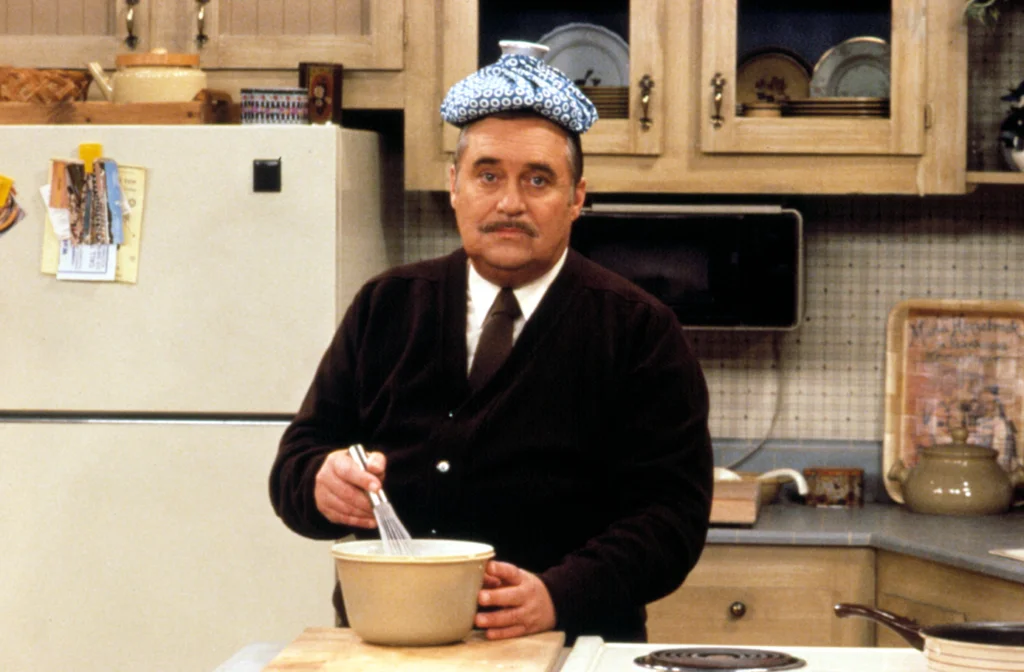
This sitcom brought British sophistication to an American household through the character of Lynn Belvedere (Christopher Hewett), a proper English butler who becomes caretaker to the Owens family of Pittsburgh. While much of the show focused on home life, the school experiences of children Kevin, Heather, and Wesley provided regular storylines, with Belvedere’s proper British wisdom contrasting with American educational approaches. Bob Uecker’s sportswriter father George often offered less refined advice, creating a comedic tension between different adult perspectives on school challenges.
The show addressed surprisingly serious issues within its light sitcom framework, including illiteracy, teen pregnancy, and HIV/AIDS, often through school-based storylines. Wesley’s constant antagonism toward Belvedere created classic sitcom conflict, while Kevin and Heather’s navigation of high school and college transitions allowed the show to explore different educational stages simultaneously. The series concluded with Belvedere helping Kevin pursue a writing career, fulfilling the promise that this unusual household mentor had prepared the children for academic success and eventual independence.
12. Just the Ten of Us (1988-1990)
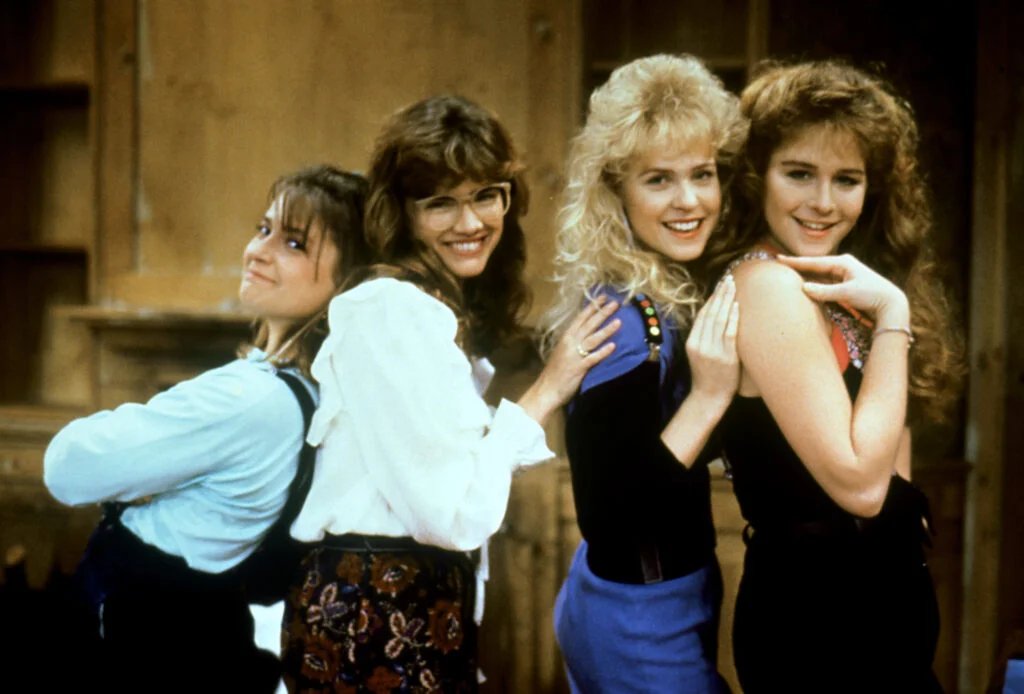
This “Growing Pains” spin-off centered on Coach Graham Lubbock (Bill Kirchenbauer), his wife Elizabeth, and their eight children after they move to California when Graham takes a job at the all-boys Catholic St. Augustine’s Academy. The unusual scenario of a large family where the father is also a teacher created natural opportunities for school-based comedy, while the four oldest Lubbock daughters’ enrollment at the neighboring girls’ school added teen drama. The family’s constant financial struggles presented a more realistic vision of teacher life than most school sitcoms dared to show.
The show’s title referred to the ten family members, emphasizing the home rather than school setting, but many storylines revolved around Coach Lubbock’s challenges managing his male students while also parenting his very different daughters. JoAnn Willette’s rebellious Constance and Heidi Zeigler’s precocious Wendy represented contrasting approaches to education, while religious elements unusual for sitcoms of the era added depth to school storylines. Though short-lived, the series presented a unique vision of the intersection between family life and academic environment through the perspective of an educator father.
13. High School U.S.A. (1983)
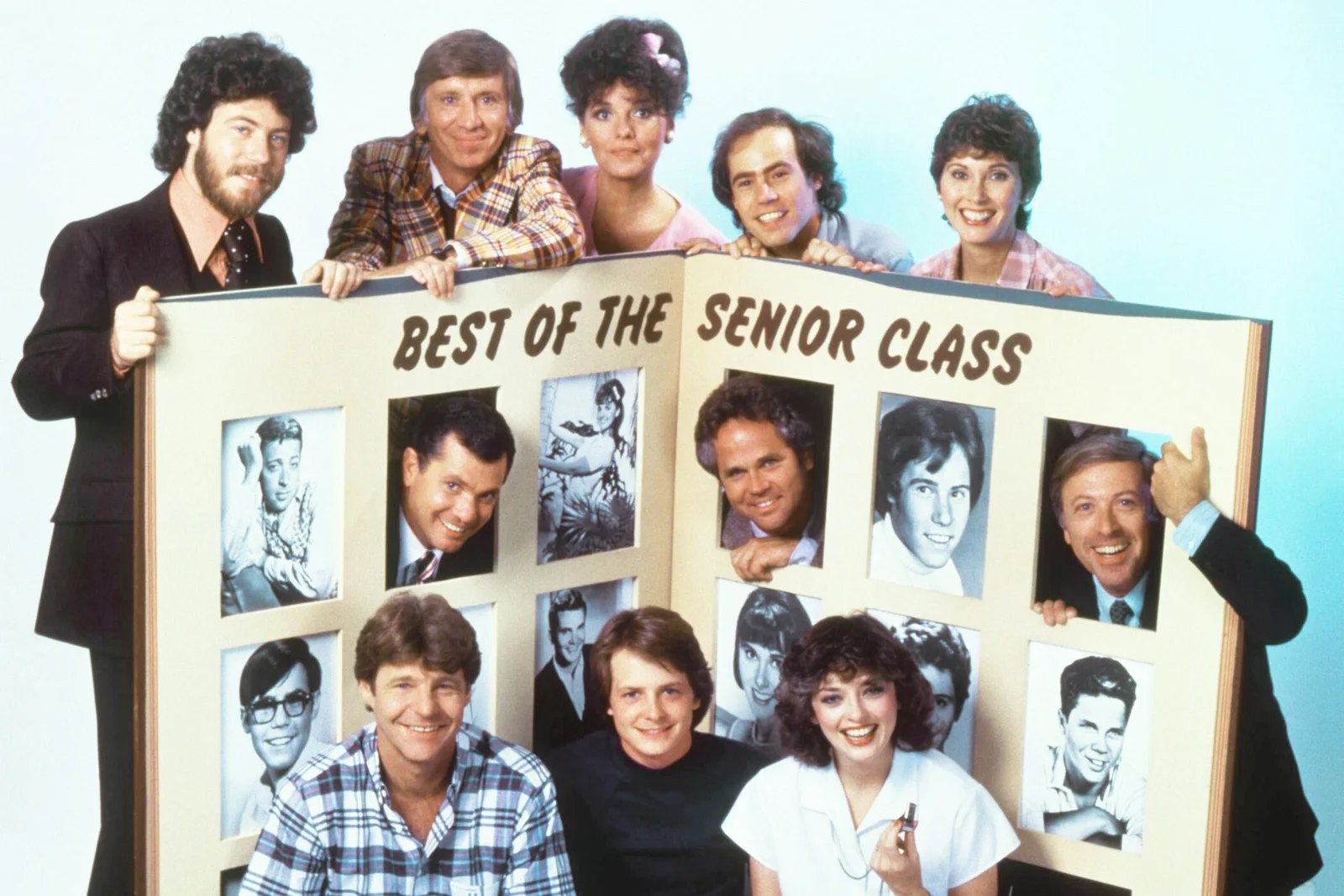
This NBC TV movie that later spawned several follow-up films deserves mention for assembling perhaps the most impressive cast of teen stars ever featured in a school production. Michael J. Fox, Anthony Edwards, Crispin Glover, Nancy McKeon, Todd Bridges, Dana Plato, and Crystal Bernard all appeared, creating a who’s-who of ’80s young Hollywood. The satirical take on high school stereotypes featured Fox as the all-American student body president competing against the rich villain (Edwards) for both school supremacy and the heart of head cheerleader Beth Franklin (McKeon).
The film’s exaggerated portrayal of high school social dynamics highlighted the artificiality of more earnest school shows, with each character representing a specific teen archetype taken to comedic extremes. Director Rod Amateau, a veteran of shows like “The Many Loves of Dobie Gillis,” brought classic sitcom sensibilities to the TV movie format, creating a time capsule of early ’80s teen comedy style. Though technically not a series, “High School U.S.A.” influenced later school comedies with its self-aware approach to educational stereotypes and its understanding that high school was primarily a social rather than academic experience.
The ’80s school sitcom created a parallel educational universe where learning was secondary to life lessons, teachers were either inspirational mentors or comedic foils, and every classroom problem could be resolved before the credits rolled. These shows convinced us that our real schools were somehow doing it wrong—where were our quirky principal nemeses, our heartfelt talks with understanding teachers, our perfectly timed life lessons? Decades later, we can recognize these shows for the fantasies they were, yet they shaped our expectations and memories of school in ways that reality never could. Perhaps that’s their true legacy—not just entertaining us, but creating a collective alternate history of education where the bell always rang just in time for the perfect punchline.



